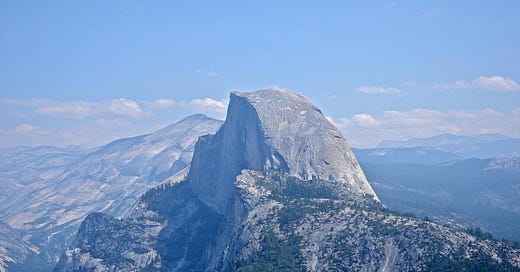Ok, now that I have infuriated some of you with that headline, I beg all of you to stay with me for a moment…
Let me start by saying that I am not promoting the specific instantiation of DOGE (Department of Government Efficiency) that exists today.
Nor am I advocating for, or denigrating, Elon Musk and his activities as a special government employee in the Executive branch.
I have a different question:
What if we need something like DOGE to fix the United States government?
People on Both Sides of the Political Aisle Believe that the US Government Is Failing
Regardless of where you are on the political spectrum, if you are an American citizen you are likely unhappy with the United States government. According to Pew Research, 35% of Democrats and 11% of Republicans trust the government “to do what is right just about always/most of the time.”
Said differently, 65% of Democrats and 89% of Republicans don’t trust the government to do the right thing just about always/most of the time.
That’s a lot of citizens unhappy with their government.
While there are a variety of reasons for this, I think any rational person can assert that trust in the US government to do the right thing is very low.
And if most people don’t trust an institution to do the right thing always/most of the time, it is reasonable that they would want to change the institution so that performance can be improved.
What Drives Change in an Institution?
In studying organizational change, one of the seminal papers on the topic was delivered by Michael Tushman, William Newman and Elaine Romanelli. In their work, which focused largely on corporations, the authors described institutional evolution and different types of organizational change while highlighting several patterns.
Some change, described as converging or incremental, falls along the lines of fine-tuning or adjusting to environmental shifts.
The other type of change, frame-breaking change, occurs when there are industry discontinuities, product life-cycle shifts, or large internal organizational dynamics. This type of change usually involves reformed mission and core values, altered power and status, reorganization, and/or new executives.
When re-reading this paper recently, the following paragraphs regarding frame-breaking change stood out to me:
Reasons for rapid, simultaneous implementation include:
… Pockets of resistance have a chance to grow and develop when frame-breaking change is implemented slowly (emphasis added). The new mission, shifts in organization, and other frame-breaking changes upset the comfortable routines and precedent.
If frame-breaking change is implemented slowly, then individuals have a greater opportunity to undermine the changes and organizational inertia works to further stifle fundamental change.
Typically, there is a pent-up need for change. During convergent periods, basic adjustments are postponed. Boat-rocking is discouraged. Once constraints are relaxed, a variety of desirable improvements press for attention. The exhilaration and momentum of a fresh effort (and new team) make difficult moves more acceptable. Change is in fashion.
And further…
Frame-breaking change triggers resistance to change from multiple sources; change must overcome several generic hurdles, including:
Individual opposition, rooted in either anxiety or personal commitment to the status quo, is likely to generate substantial individual resistance to change.
Political coalitions opposing the upheaval may be quickly formed within the organization. During converging periods a political equilibrium is reached. Frame-breaking upsets this equilibrium; powerful individuals and/or groups who see their status threatened will join in resistance.
Control is difficult during the transition. The systems, roles, and responsibilities of the former organization are in suspension; the new rules of the game-and the rewards-have not yet been clarified.
External constituents-suppliers, customers, regulatory agencies, local communities, and the like-often prefer continuation of existing relationships rather than uncertain moves in the future.
This sounds very familiar to what we are reading about every day regarding the United States government and DOGE’s activities.
Is it Realistic to Compare Companies to Governments?
One might rightly ask if describing the change seen in commercial organizations is the same as in governments. I posit that while accepting that the comparison is not perfect, we see similar patterns in all large organizations — they become sclerotic, bureaucratic, and slow. Pockets in established structures fight change not because the people in them are stupid or bad, but rather because individuals and groups want to hold on to what they have. This is a natural human reaction.
We see this in every type of large organization: companies, governments, universities, religious institutions, etc.
Now, governments don’t experience frame-breaking change due to shifts in “product life-cycle shifts.”
Usually, frame-breaking change at the government level is driven by a revolution, structural government failure, or an economic/financial crisis…
Another way is by losing a war…
Don’t Throw Out the Baby with the Bathwater?
Due to DOGE’s activities, I personally know people who have lost their jobs, or where government funding for research and/or a startup has been cut and thus will require layoffs that will impact individuals in the government, educational institutions, and also the private sector. As painful as these real examples are…
Revolution, government failure, losing a war, or an economic/financial crisis would be much worse than what we have seen to date.
A fair question to ask is if DOGE is the only way to drive change in the government — a government that a majority of the people in the country from all political perspectives believe cannot be trusted to do what is right just about always/most of the time.
Well, if we don’t believe the research in the literature, we can look over the data of the last 25 years. We can definitively conclude that incremental change doesn’t work. Both parties have contributed to the fiscal problems we currently see. From the 2001-2008 Republican administration to the 2009-2016 Democratic administration to Trump’s first term in office from 2017-2020 to Biden’s tenure from 2021-2025 — there is no hiding the fact that in the last 24 years, spread equally between both political parties, spending has only gone in one direction — up:
Now, is this such a big deal? When interest rates were low, the government could argue that the national debt could be serviced through borrowing. But look at the cost of that borrowing in the last few years when interest rates rose:
When I see charts like this in business, I like to joke that “curves like that don’t exist naturally in nature.” But then I realized I have seen a figure like this in nature:
This is not normal — especially in peacetime. During the Second World War government spending and borrowing skyrocketed in many countries, including the United States. Worth noting is we’ve largely had peace for most of the last 18 years. More concerning is when we look at how interest costs compare in both absolute and relative size to other government expenditures, we see a huge issue:
The United States government is spending more annually on interest payments for its debt than annually on medicare, medicaid, and defense.
That’s a problem. Money is not infinite and debt always gets paid. Always.
And if debt doesn't get paid it is due to a catastrophic failure of an institution.
If It Is Important Enough to Fix…
When I look at current US government spending I see an inherently unstable status quo. And then I internalize that large institutions don’t change without some exogenous shock to the system.
Like a financial crisis.
Like a lost war.
(Both of these seem pretty undesirable.)
Like DOGE.
An attempt to change something of the size and scale of the United States Government has never worked historically when done with a soft touch. The data shows things won’t change without a crisis or a collapse or some other frame-breaking change to the system.
This is our collective lived experience.
So maybe we need DOGE? Or something like it.
And the reactions to DOGE are completely predictable — Tushman, et al., described these expected backlashes over 40 years ago.
Postscript
However this plays out, and I hope that we are lucky enough to get to the other side without a crisis, leaders should remember that it is important to look in the mirror and acknowledge that those in power must manage properly along the way.
That’s the responsibility of the adults in the room.









The fact that people don't trust the government to do the right thing all or most of the time (whatever that means), isn't good evidence the bureaucracy isn't performing. There are other possible explanations for increasing distrust that are more plausible than that a large number bureaucratic functions have somehow gone off the rails. One is that legislators are getting the will of the voters wrong, which is a problem with the legislative branch, not the executive branch. Don't like the CFPB? OK. Which branch created the CFPB? Another is an ever more polarized and politicized news environment. We need better evidence of the corruption and waste that DOGE claims to be solving.
Hi Rob, great to read your thoughts on all this. I agree 100% that we need a massive disruption to redirect our government from never-ending growth filling whatever available space it can find to efficiently using taxpayer dollars to deliver essential services. However, I fear DOGE will be a big wasted opportunity that will set back the cause of government reform. The efforts to date seem opportunistic and random, driven by the determination (whims) of one man and his minions. Plus, the "real" problem with government over-spending, over-regulation, and over-reach comes from the top: the President, Congress and all the big money interests that put them in power (to further the big money interests' goals). DOGE can wipe out a bunch of government jobs (for now), but they will all come roaring back as soon as the next administration comes into power (or maybe when Trump changes his mind, as he tends to do daily, when he sees the next jobs report). Moreover, three of the big drivers of government spending (social security, healthcare and defense) are largely outside of DOGE (the defense department is trying to eliminate certain jobs so they can spend more elsewhere - no true DOGE going on here). As long as big money owns all the politicians, we will end up on the same trajectory, and in the meantime the DOGE effort will seem like petty, small actions driven more by personal pique and bias than a thoughtful reconsideration of government's role domestically and internationally.